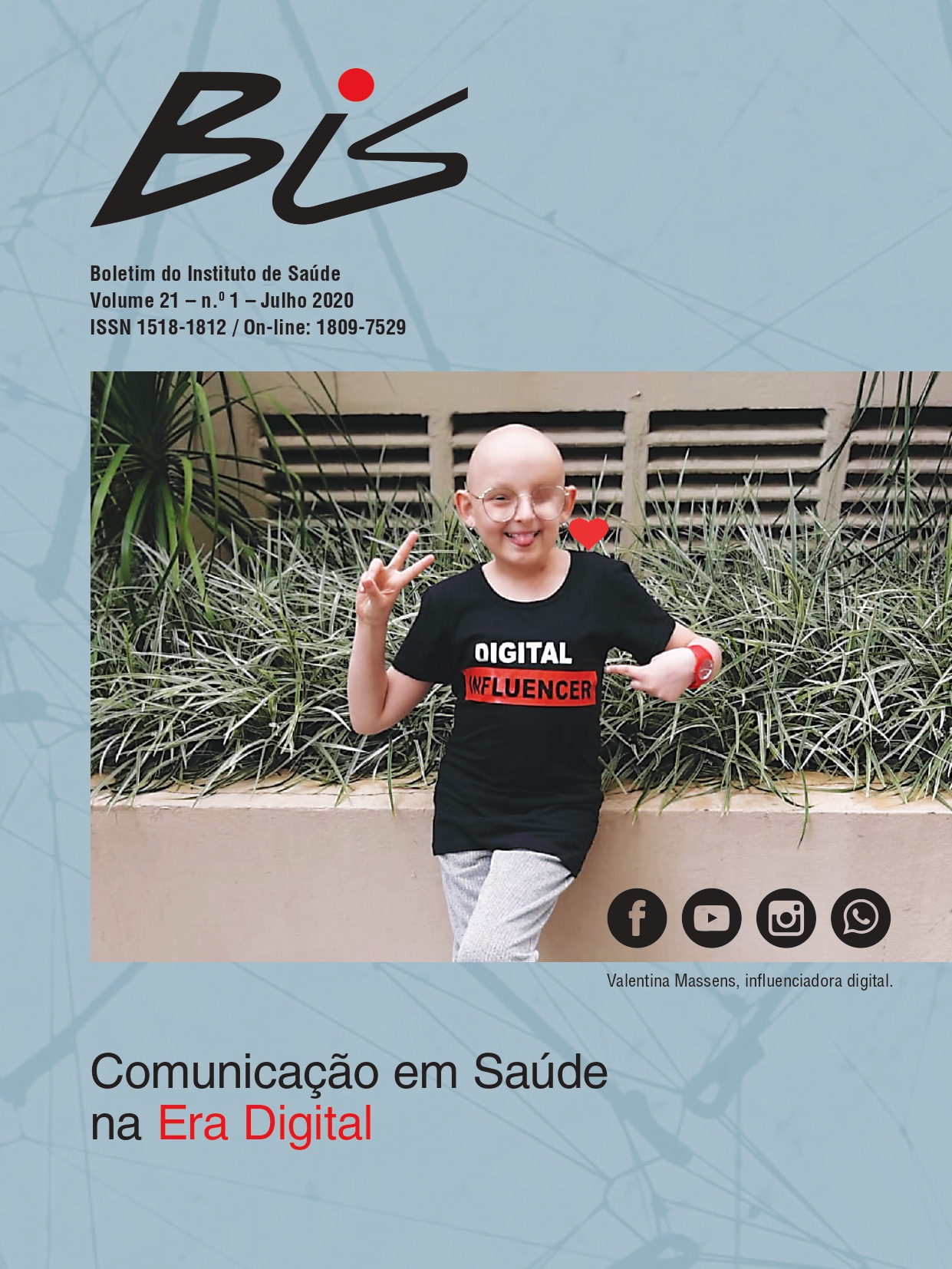Abstract
Willian Chimura, a researcher interested in technology-based interventions for autism, diagnosed with Asperger’s Syndrome, started a YouTube channel in 2019. This channel has rapidly become the major Brazilian channel maintained by an autistic individual on the platform. This report covers some of the challenges faced in the process of web content creation about autism, using scientific references, produced to educate people about the condition. Additionally, tensions and issues that are currently being discussed by autism activists are presented. The content published on the channel has been approved by several health and education professors and professionals, and it is often being used in educational institutions and it is suggested to people that have a family member diagnosed with an autism spectrum condition.
References
2. Asperger H. Die Autistischen psychopathen im kindesalter. Archiv für psychiatrie und nervenkrankheiten. 1944; 117(1):76-136.
3. Wing L. Asperger’s syndrome: a clinical account. Psychological medicine. 1981;11(1): 115-29.
4. Wing L. The continuum of autistic characteristics. In: Eric S, Gary BM, editors. Diagnosis and assessment in autism. Boston: Springer; 1988. p.91-110.
5. Szatmari P. The validity of autistic spectrum disorders: A literature review. Journal of Autism and Developmental Disorders. 1992; 22(4):583-600.
6. American Psychiatric Publication. Diagnostic and statistical manual of mental disorders- DSM-5. 5. ed. Washington: American Psychiatric Publication; 2013.
7. Lai MC, Lombardo MV, Chakrabarti B, Baron-Cohen S. Subgrouping the autism spectrum: reflections on DSM-5. PLoS Biology. 2013; 11(4): e1001544.
8. OMS. Organização Mundial da Saúde. CID-10: Classificação Estatística Internacional de Doenças com disquete. São Paulo: EDUSP; 1994. v. 109. Maenner MJ, Shaw KA, Baio J. Prevalence of autism spectrum disorder among children aged 8 years—autism and developmental disabilities
monitoring network. MMWR Surveillance Summaries.2020;69(4):1-12.
10. Portolese J, Bordini D, Lowenthal R, Zachi EC, de Paula CS. Mapeamento dos serviços que prestam atendimento a pessoas com transtornos do espectro autista no Brasil. Cad. Pós-Grad. Distúrb. Desenvolv. 2017;17(2):79-91.
11. Lacerda L. Luz, Câmera, Estereótipo-Ação! A representação do autismo nas séries de TV. Revista Espaço Acadêmico. 2017; 17(193):13-22.
12. Ortega F, Zorzanelli R, Meierhoffer LK, Rosário CA, Almeida CF, Andrada BF et al. A construção do diagnóstico do autismo em uma rede social virtual brasileira. Interface-Comunicação, Saúde, Educação. 2013; 17(44):119-32.
13. Ortega F. Deficiência, autismo e neurodiversidade. Cien Saude Colet. 2009; 14:67-77.
14. Hart B. Autism parents & neurodiversity: Radical translation, joint embodiment and the prosthetic environment. BioSocieties. 2014; 9(3): 284-303.
15. Anastasiou D, Kauffman JM. The social model of disability: Dichotomy between impairment and disability. The Journal of Medicine and Philosophy: A forum for bioethics and philosophy of medicine. 2013;38 (4): 441-459.
16. Schmidt C, Bosa C. A investigação do impacto do autismo na família: revisão crítica da literatura e proposta de um novo modelo. Interação em Psicologia.2003;7(2).
17. Di Nubila HB, Buchalla CM. O papel das Classificações da OMS-CID e CIF nas definições de deficiência e incapacidade. Rev Bras Epidemiol. 2008;11(2):324-35.
18. Singer J. NeuroDiversity: The birth of an idea. Judy Singer;2017.
19. Kapp SK, Gillespie-Lynch K, Sherman LE, Hutman T. Deficit, difference, or both? Autism and neurodiversity. Developmental psychology. 2013; 49(1):59.
20. Mendes EG. A radicalização do debate sobre inclusão escolar no Brasil. Rev Brasileira de Educação. 2006;11(33):387-405.21. Ortega F, Zorzanelli R, Rios C. The Biopolitics of Autism in Brazil. Re-thinking Autism: Diagnosis, Identity and Equality. 2016; 5:67-89.
22. Russell G. Critiques of the Neurodiversity Movement. Autistic Community and the Neurodiversity Movement. Singapore: Palgrave Macmillian; 2020.
23. Mostert MP. Facilitated communication since 1995: A review of published studies. Rev J Autism Dev Disord.
2001; 31(3):287-313.
24. Grandin T, Panek R. The autistic brain: Thinking across the spectrum. Boston: Houghton Mifflin Harcourt;2013.
25. Fein D, Kamio Y. Commentary on The Reason I Jump by Naoki Higashida.J Dev Behav Pediatr. 2014;35(8):539-42.
26. Beals KP. Review of Communication Alternatives in Autism: Perspectives on Typing and Spelling Approaches for the Nonspeaking. Journal of
Evidence-Based Social Work. Informa UK Limited. 2020;17(3):361–7.
27. Steinbrenner JR, Hume K, Odom SL, Morin KL, Nowell SW, Tomaszewski B et al. Evidence-based practices for children, youth, and young adults with Autism. The University of North Carolina at Chapel Hill, Frank Porter Graham Child Development Institute, National Clearinghouse on Autism Evidence and Practice Review Team. Chapel Hill: The University of North Carolina at Chapel Hill, 2020.
28. NAC. National Autism Institute. Findings and conclusions: National standards project, phase 2. Randolph: National Autism Institute; 2015.
29. Dell’Osso L, Dalle Luche R, Gesi C, Moroni I, Carmassi C, Maj M. From Asperger’s autistischen psychopathen
to DSM-5 autism spectrum disorder and beyond: a subthreshold autism spectrum model. Clinical practice and epidemiology in mental health: CP & EMH.2016;12:120.
30. Lindgren S, Lundström R. Tube therapy: Dealing with mental health problems in social video comment threads. First Monday. 2019; 24(5).
31. Hu HF, Liu TL, Hsiao RC, Ni HC, Liang SH, Lin CF, et al. Cyberbullying victimization and perpetration in adolescents with high-functioning autism spectrum disorder: Correlations with depression, anxiety, and suicidality. Rev J Autism Dev Disord.2019; 49(10):4170-80.
Chimura W. Autismo e ativismo pela Internet: um relato de experiência do canal “Willian Chimura”. Bol Inst Saúde. 2020; 21(1):129

This work is licensed under a Creative Commons Attribution 4.0 International License.
Copyright (c) 2020 Willian Chimura
